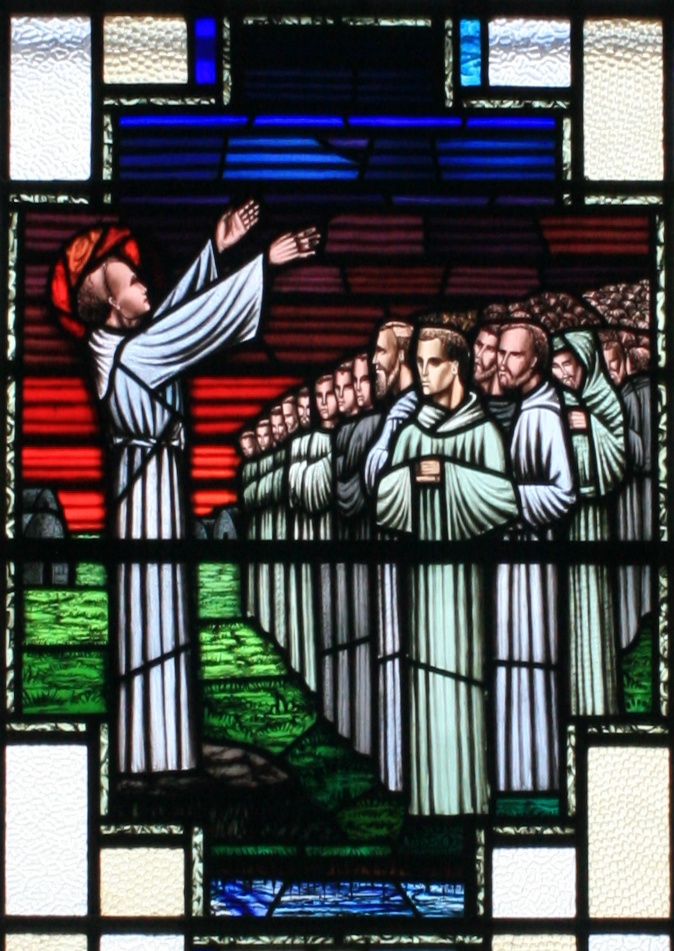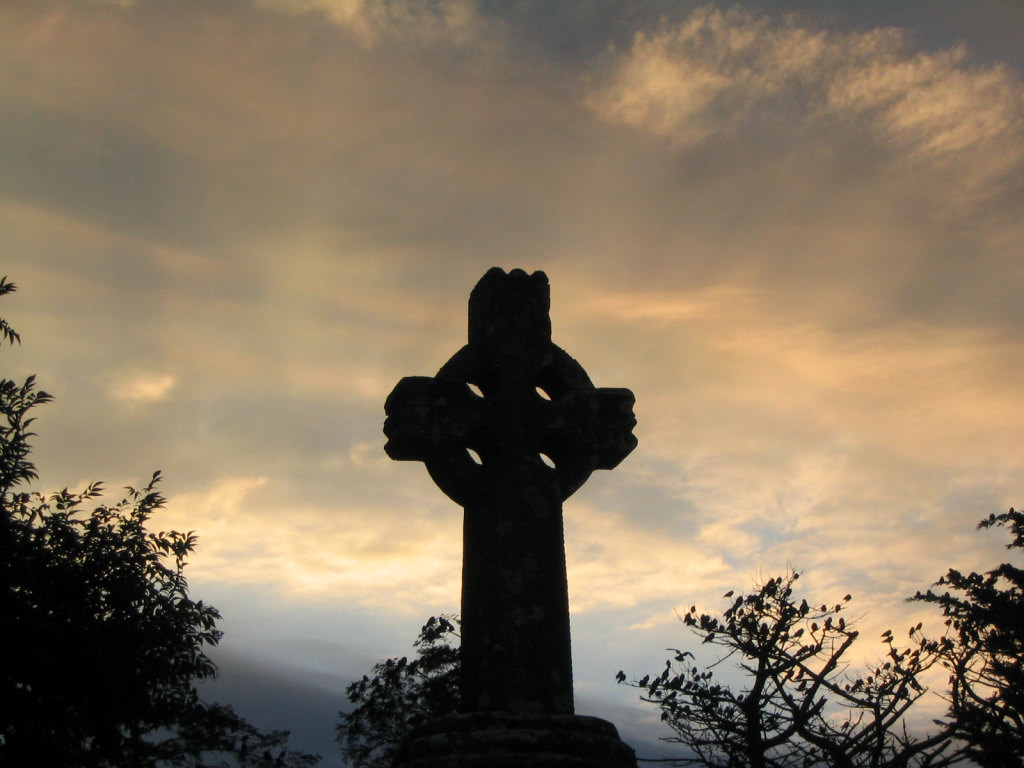|
Finnian Of Movilla
Finnian of Movilla (–589) was an Irish Christian missionary. His feast day is 10 September. Origins and life Finnian (sometimes called Finbarr "the white head", a reference to his fair hair), was a Christian missionary in medieval Ireland. He should not be confused with his namesake Finnian of Clonard, nor should Movilla (Maigh Bhile) in County Down be mistaken for Moville in County Donegal. Traditional scholarship has it that he was a descendant of Fiatach the Fair and born in Ulster, but his lineage has been questioned lately by the American Celticist Thomas Owen Clancy. He apparently studied under Colman of Dromore and Mochaoi of Nendrum, and subsequently at Candida Casa ( Whithorn), after which he proceeded to Rome to complete his studies. Legend has it that whilst at Candida Casa, he played a prank (nature unknown) on Princess Drustice, the daughter of a Pictish king, who was in the ladies' section of the monastery, and perhaps had he not been so well conne ... [...More Info...] [...Related Items...] OR: [Wikipedia] [Google] [Baidu] [Amazon] |
Finnian Of Clonard
Finnian of Clonard ('Cluain Eraird') – also Finian, Fionán or Fionnán in Irish; or Finianus and Finanus in its Latinised form (470–549) – was one of the early Irish monastic saints, who founded Clonard Abbey in modern-day County Meath. The Twelve Apostles of Ireland studied under him. Finnian of Clonard (along with Enda of Aran) is considered one of the fathers of Irish monasticism. Early life Finnian was born at the Kingdom of Leinster, son of Findlog. His birthplace is generally supposed to have been near the present town of New Ross. He was a member of Clanna Rudhraighe from the Ulaid. Abban baptised Finnian, and at an early age, he was placed under the care of Bishop Fortchern of Trim.Thunder, John"St. Finnian of Clonard"''Irish Ecclesiastical Record'', Vol. XIII, p. 810, 1892 According to some sources, Finnian studied for a time at the monastic centre of Martin of Tours in Gaul. Tours was noted for its austerity. He later went to Wales and continued his studie ... [...More Info...] [...Related Items...] OR: [Wikipedia] [Google] [Baidu] [Amazon] |
Book Of Armagh
The ''Book of Armagh'' or Codex Ardmachanus (ar or 61) (), also known as the ''Canon of Patrick'' and the ''Liber Ar(d)machanus'', is a 9th-century Irish art, Irish illuminated manuscript written mainly in Latin. It is held by the Library of Trinity College Dublin (MS 52). The document is valuable for containing early texts relating to St Patrick, the 7th century Irish bishop Tírechán, the Irish monk Muirchú moccu Machtheni, Muirchú. The book contains some of the oldest surviving specimens of Old Irish language, Old Irish and for being one of the earliest manuscripts produced by an insular church to contain a near complete copy of the New Testament. History The manuscript was once reputed to have belonged to St. Patrick and, at least in part, to be a product of his hand. Research has determined, however, that the earliest part of the manuscript was the work of a scribe named Ferdomnach of Armagh (died 845 or 846). Ferdomnach wrote the first part of the book in 807 or 808, for ... [...More Info...] [...Related Items...] OR: [Wikipedia] [Google] [Baidu] [Amazon] |
Celtic Christian
Celtic Christianity is a form of Christianity that was common, or held to be common, across the Celtic-speaking world during the Early Middle Ages. The term Celtic Church is deprecated by many historians as it implies a unified and identifiable entity entirely separate from that of mainstream Western Christendom. For this reason, many prefer the term Insular Christianity. As Patrick Wormald explained, "One of the common misconceptions is that there was a ''Roman'' Church to which the ''Celtic'' Church was nationally opposed." Some writers have described a distinct "Celtic Church" uniting the Celtic peoples and distinguishing them from adherents of the Roman Church, while others classify Celtic Christianity as a set of distinctive practices occurring in those areas. Varying scholars reject the former notion, but note that there were certain traditions and practices present in both the Irish and British churches that were not seen in the wider Christian world. Such practi ... [...More Info...] [...Related Items...] OR: [Wikipedia] [Google] [Baidu] [Amazon] |
Dál Fiatach
Dál Fiatach was a Gaelic Ireland, Gaelic dynastic-grouping and the name of their territory in the north-east of Ireland, which lasted throughout the Middle Ages until their demise in the 13th century at the hands of Normans in Ireland, Normans. It was part of the over-kingdom of Ulaid, and they were its main ruling dynasty for most of Ulaid's history. Their territory lay in eastern County Down. Their capital was Dún Lethglaise (Downpatrick) and from the 9th century their main religious site was Bangor Abbey. Description The Dál Fiatach are claimed as being descended from Fiatach Finn, Fiatach Finn mac Dáire, a legendary King of Ulaid and High King of Ireland, and are thought to be related to both the Voluntii and Darini of Ptolemy's ''Geographia (Ptolemy), Geographia''. They are also perhaps more directly related to the pre-historic Dáirine, and the later Corcu Loígde of Munster. Kinship with the Osraige is also supported, and more distantly with the Dál Riata. The Ulaid ... [...More Info...] [...Related Items...] OR: [Wikipedia] [Google] [Baidu] [Amazon] |
Lebor Gabála Érenn
''Lebor Gabála Érenn'' (literally "The Book of Ireland's Taking"; Modern Irish spelling: ''Leabhar Gabhála Éireann'', known in English as ''The Book of Invasions'') is a collection of poems and prose narratives in the Irish language intended to be a history of Ireland and the Irish from the creation of the world to the Middle Ages. There are a number of versions, the earliest of which was compiled by an anonymous writer in the 11th century. It synthesised narratives that had been developing over the foregoing centuries. The ''Lebor Gabála'' tells of Ireland being "taken" (settled) by six groups of people: the people of Cessair, the people of Partholón, the people of Nemed, the Fir Bolg, the Tuatha Dé Danann, and the Milesians. The first four groups are wiped out or forced to abandon the island; the fifth group represents Ireland's pagan gods, while the final group represents the Irish people (the Gaels). The ''Lebor Gabála'' was highly influential and was largely ... [...More Info...] [...Related Items...] OR: [Wikipedia] [Google] [Baidu] [Amazon] |
Tuan Mac Cairill
In Irish mythology Tuan mac Cairill was a recluse who retains his memories from his previous incarnations, going back to Antediluvian age. Initially a follower of Partholon, he alone survived the plague, or the Flood, that killed the rest of his people. Through a series of animal transformations he survived into Christian times, and, in conversation with St. Finnian of Moville told a brief history of himself and of Ireland from his people onward to the coming of St. Patrick. Sources His legend is found in an 11th-century manuscript called Lebor na hUidre (The Book of Dun Cow); in a 15th Century manuscript called Laud 610 kept at the Bodleian Library, Oxford; and in a 16th Century manuscript labeled H.3.18 at Trinity College, Dublin. Summary Tuan who was a hermit or recluse, told St. Finnan that he was born 2000 years earlier and witnessed many of the waves of invaders who came to ancient Ireland - the Nemedians, Fir Bolg and the Tuatha De Dannan. As the lone human guard ... [...More Info...] [...Related Items...] OR: [Wikipedia] [Google] [Baidu] [Amazon] |
Newtownards
Newtownards (; ) is a town in County Down, Northern Ireland. It lies at the most northern tip of Strangford Lough, 10 miles (16 km) east of Belfast, on the Ards Peninsula. It is in the Civil parishes in Ireland, civil parish of Newtownards (civil parish), Newtownards and the historic Barony (Ireland), baronies of Ards Lower and Castlereagh Lower. Newtownards is in the Ards and North Down Borough Council, Ards and North Down Borough. The population was 29,677 in the 2021 United Kingdom census, 2021 Census. History Irish settlement In 540 AD, Finnian of Moville, St. Finian founded Movilla Abbey, a monastery, on a hill overlooking Strangford Lough about a mile northeast of present-day Newtownards town centre. "Movilla" (''Magh Bhile'') means "the plain of the sacred tree" in Irish language, Irish, which suggests that the land had previously been a sacred Celtic paganism, pagan site. It became a significant Christian settlement – a centre for worship, study, mission and ... [...More Info...] [...Related Items...] OR: [Wikipedia] [Google] [Baidu] [Amazon] |
Strangford Lough
Strangford Lough () is a large sea lough or inlet in County Down, in the east of Northern Ireland. It is the largest inlet in Ireland and the wider British Isles, covering . The lough is almost fully enclosed by the Ards Peninsula and is linked to the Irish Sea by a long narrow channel at its southeastern edge. The main body of the lough has at least seventy islands along with many islets (pladdies), bays, coves, headlands and mudflats. It is part of the Strangford and Lecale Area of Outstanding Natural Beauty. Strangford Lough was designated as Northern Ireland's first Marine Conservation Zone in 2013, and has been designated a Special Area of Conservation for its important wildlife. Strangford Lough is a popular tourist destination noted for its fishing and scenery. Towns and villages around the lough include Killyleagh, Comber, Newtownards, Portaferry and Strangford. The latter two straddle either shore of the narrow Strangford channel, and are connected by a car ferry. ... [...More Info...] [...Related Items...] OR: [Wikipedia] [Google] [Baidu] [Amazon] |
Vulgate
The Vulgate () is a late-4th-century Bible translations into Latin, Latin translation of the Bible. It is largely the work of Saint Jerome who, in 382, had been commissioned by Pope Damasus I to revise the Gospels used by the Diocese of Rome, Roman Church. Later, of his own initiative, Jerome extended this work of revision and translation to include most of the books of the Bible. The Vulgate became progressively adopted as the Bible text within the Western Church. Over succeeding centuries, it eventually eclipsed the texts. By the 13th century it had taken over from the former version the designation (the "version commonly used") or for short. The Vulgate also contains some ''Vetus Latina'' translations that Jerome did not work on. The Catholic Church affirmed the Vulgate as its official Latin Bible at the Council of Trent (1545–1563), though there was no single authoritative edition of the book at that time in any language. The Vulgate did eventually receiv ... [...More Info...] [...Related Items...] OR: [Wikipedia] [Google] [Baidu] [Amazon] |






